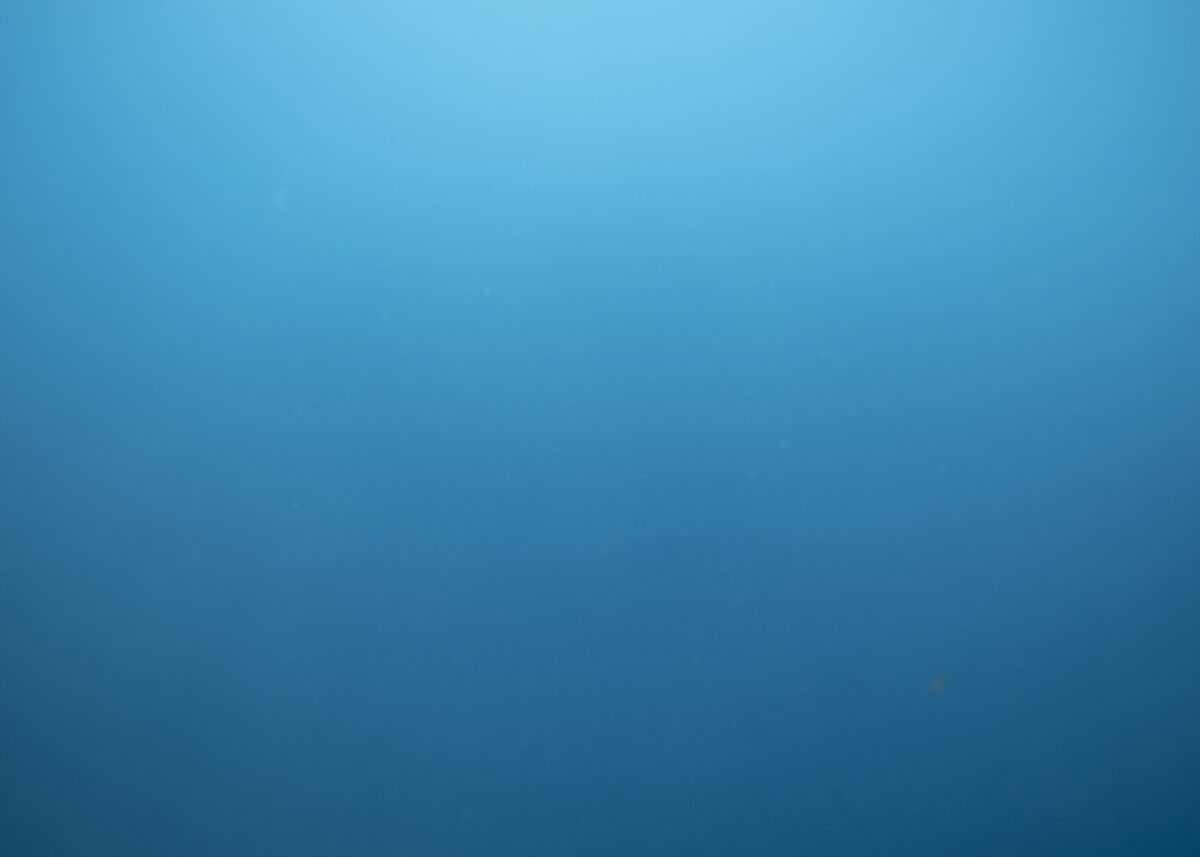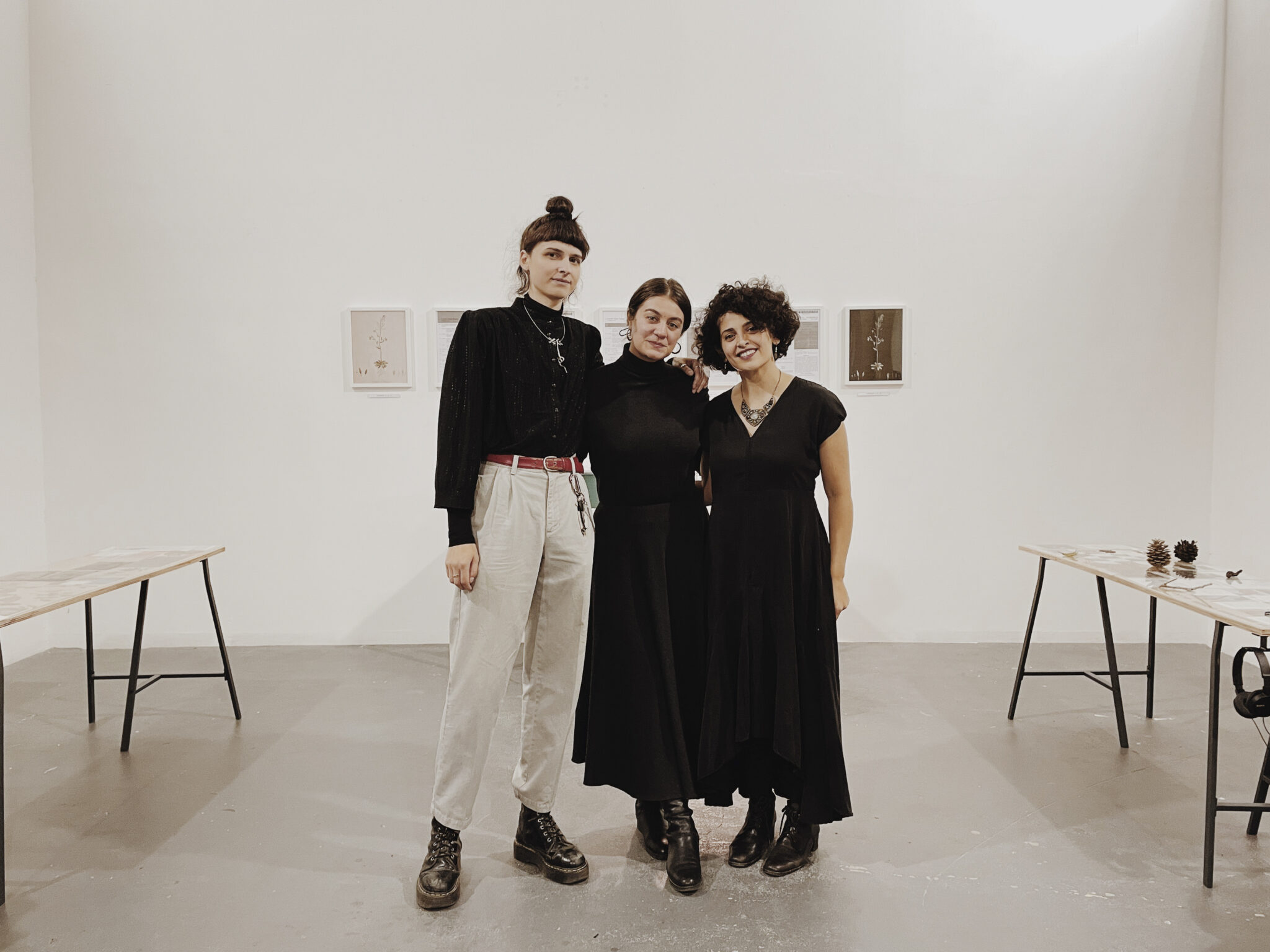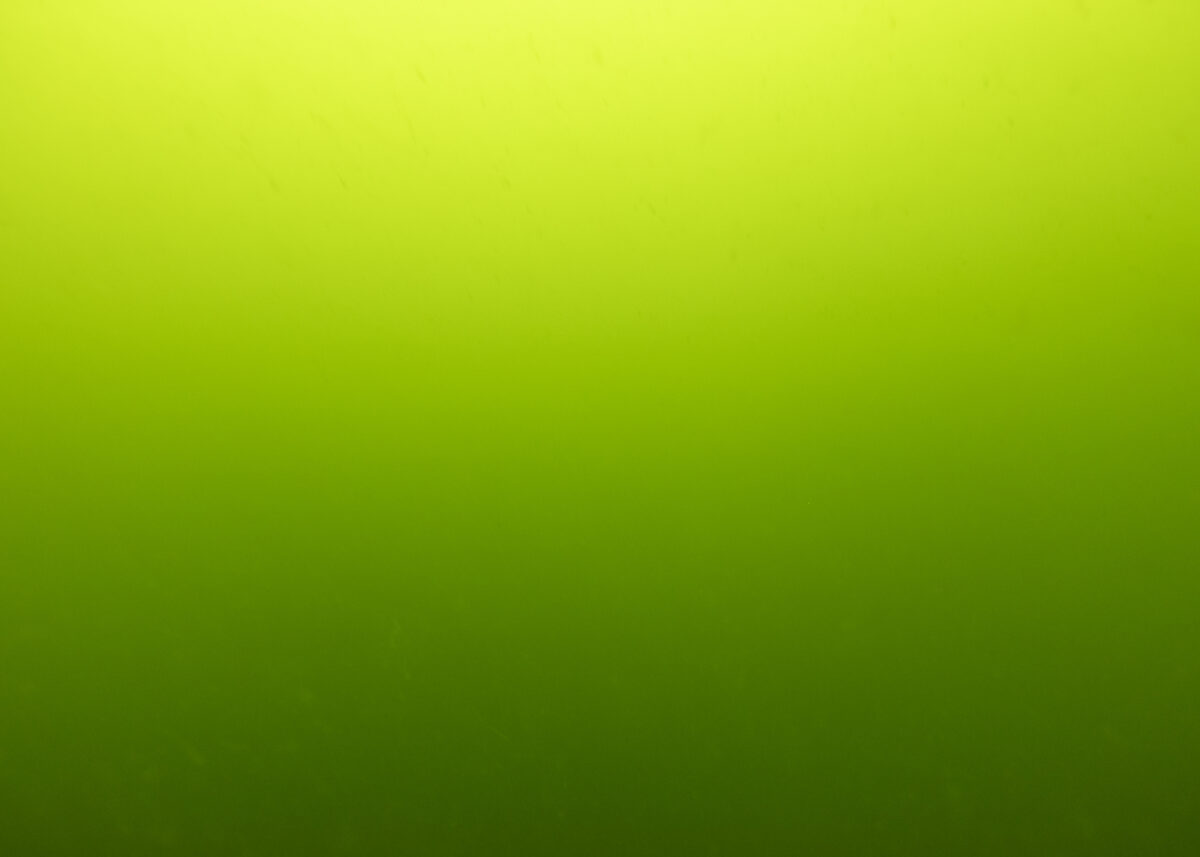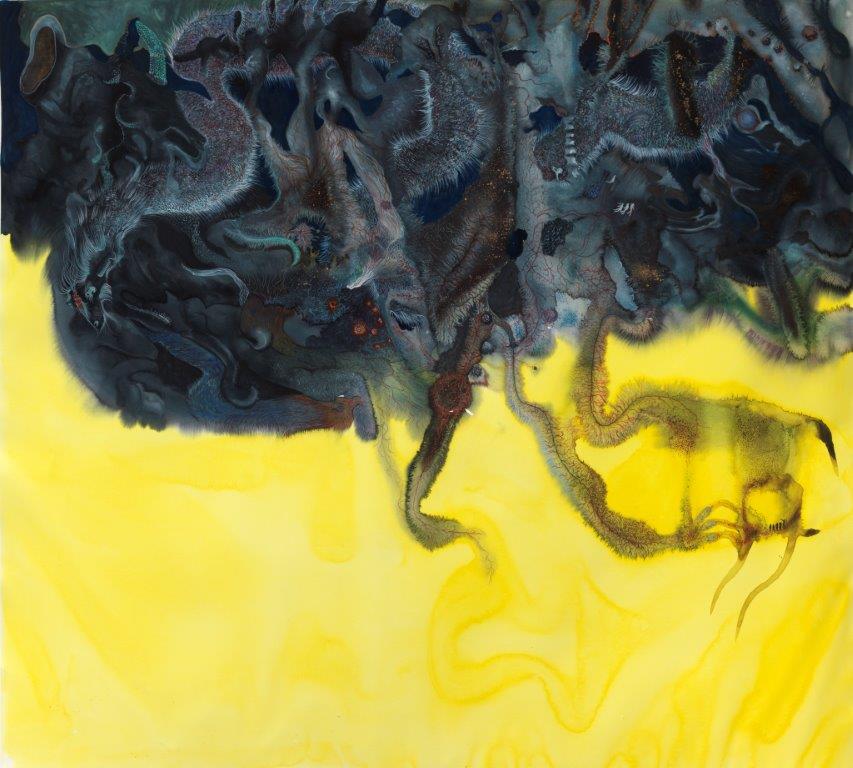
CALL FOR PROJECTS COAL PRIZE 2025: Freshwater
The COAL Prize 2025 dedicated to fresh water is a call to fight against the drying up of our sensitivities…

The COAL 2023 Prize was awarded to the Al-Wah’at collective for its Wild Hedges project. The jury’s special prize was awarded to Fabiana Ex-Souza for her project Trouxas de mandinga. This year, two special mentions were also awarded: the NOVA_XX mention in partnership with the Centre Wallonie-Bruxelles/Paris to Laura Cinti for her project AI in the Sky and the Ateliers Médicis award to Shivay for his project Talking skies.
Image credits: © Anne Wernikoff
Published on 26 June 2023
The prizes will be awarded on September 20, 2023, on the occasion of the first edition of SANS RÉSERVE, the new art and ecology event launched by COAL at the Musée de la Chasse et de la Nature in Paris, initiating a rich season of events for COAL’s 15th anniversary (2023-2024).
The winners of the Prix COAL 2023 – Plante! bear witness to artists’ attention to the forms of living plants, and to the many potentials of art in favor of their preservation and resilience.
Discover the
winner of the COAL Student Prize – Culture & Diversity 2023
.
AL-WAH’AT COLLECTIVE, WINNER OF THE COAL 2023 PRIZE FOR THE WILD HEDGES PROJECT
It was in the 16th century that the prickly pear was introduced to Europe by the conquistadors in order to cultivate its parasitic insect, a species of cochineal used for centuries in Latin America to produce a brilliant red dye. While this species of mealybug has not survived the European climate, the cactus has spread widely. In Mediterranean regions, it has become a veritable cultural symbol. Elsewhere, in South Africa or Australia, it is quickly considered invasive. The false carmine mealybug(Dactylopius opuntiae) was therefore introduced to control the spread of the cactus. Spreading in its turn, the insect has become a relentless pest, particularly for prickly pear crops in the Mediterranean.
Taking as its starting point the colonial, ecological and symbolic histories of the prickly pear(Opuntia ficus-indica or sabr in Arabic) and the cochineal, with
Wild Hedges
the
Al-Wah’at collective
collective questions the notion of invasive species and explores practices of care and resilience with and for plants. Through a variety of research projects and practices developed collectively with local communities, in Palestine and elsewhere, they explore the multiple potentials of this plant: the uses of its dead fiber for weaving and construction; the benefits of collecting cochineals both for pigment manufacture and to halt the annihilation of cacti; or the reactivation of the culinary and food-producing practices that surround it. These are all participative actions, underpinned by long-term research, such as the study of ecological variables affecting the spread of the insect and the resilience of the cactus.
Prolific and inspiring, this plant, which can survive with a minimum of water for long periods at high temperatures, could well become a model of resistance for the future, at a time when geo-political tensions over water management are intensifying as a result of global warming.
Al-Wah’at Collective (Palestine
/United Kingdom/Spain
)
Areej Ashhab, Ailo Ribas and Gabriella Demczuk were born respectively in 1995 in Jerusalem, in 1996 in Cambridge, UK, and in 1991 in Stockholm, Sweden. Live and work in Palestine, the UK and Spain.
The Al-Wah’at collective, made up of artists Areej Ashhab, Ailo Ribas and Gabriella Demczuk, is committed to developing community practices in the heart of ecosystems generally considered hostile or lifeless. Graduates of the Centre for Research Architecture at Goldsmiths University, London, they live and work between Palestine, the UK and Spain. Their work has been presented in England and Palestine (Arts Catalyst, Sakiya).
FABIANA EX-SOUZA, WINNER OF THE JURY’S SPECIAL PRIZE FOR THE TROUXAS DE MANDINGA PROJECT
The history of plants refers to a set of historical processes linked to violence and domination. In his book, La colonisation du savoir. A history of medicinal plants in the “New World” (1492-1750), historian Samir Boumediene reports on how certain plants from the American continent were regarded by European political, religious and scientific authorities of the modern era as “goods of prime importance”, while others were “the target of the inquisitorial police”. The seeds of colonization are indicators of political power relations and bear the scars of suffering.
Fabiana Ex-Souza
apprehends plants as being “ensnared in a set of bonds” that can become poisons as well as remedies. So, if certain plants imported into Europe by colonization evoke processes of violence – coffee and cotton take us back to slavery, tobacco to smoking and its diseases, corn to ravaged Amerindian cultures – another force, equal in power, this time healing, can be expressed. Through the practice of weaving, embroidery and the collection of natural elements, the artist creates healing objects called
Trouxas de mandinga
inspired by the history of the Afro-Brazilian Patuás. Like amulets embroidered with living seeds, some of them are destined to return to the earth to trigger a process of plant transmutation.
By using the transmutational powers of seeds to rethink our relationship with history, Fabiana Ex-Souza aims to restore our ties to the living, and transform stories of plant-related violence into potential for healing.
Fabiana Ex-Souza
(Brazil)
Born in 1980 in Belo-Horizonte, Brazil. Lives and works in Paris, France.
Born De Souza, Fabiana Ex Souza is an Afro-Brazilian artist and researcher whose transdisciplinary practice combines performance, video, installation, photography and plant materials. Ex-Souza is pursuing a PhD in Visual Arts and Photography at Université Paris VIII, conducting research on Latin American Decolonial Aesthetics. In 2020, she was one of the winners of the Prix “La vie bonne” – AWARE: Archives of Women Artists, Research and Exhibitions / Centre national des arts plastiques – Cnap with the project “Plusieurs Manteaux To Bispo”. A recent winner of the French Ministry of Culture’s “Mondes Nouveaux” program with the “RADEAU” touring project with the MAN.GUE collective, she has performed at the Fondation Cartier, the Musée national d’art moderne – Centre Pompidou and the Maison de l’Amérique Latine.
SHIVAY, WINNER OF THE “ATELIERS MÉDICIS” AWARD FOR THE “CIELS QUI PARLENT” PROJECT
A woody fruit and a cauliflorous plant, the calabash is produced by two plant species, one growing on the trunk of the calabash tree and the other as the fruit of a liana that has been crawling across the surface of the planet since time immemorial. Carried by the waves, along rivers and oceans, it is distributed throughout the world and offers humans a multitude of uses: containers, decorative objects, jewelry, lighting, seating, musical instruments such as the kora, balafon, candombe, berimbau or imzad, or even objects for funerary, divinatory and magical rituals linking humans to the beyond. In China, as in the Mediterranean, it became a lifebuoy; along the American coast, freebooters used it to store gunpowder; in Mexico, it collected the sap of the agave; in Guyana, it became a dye plant for fabrics; in Chinese cosmogony, it symbolized the great whole…
It is for the calabash’s multiple potentials, non-binary and omnipresent in time and space, under different statuses, that
Shivay
would like to pay tribute to the calabash, having herself been introduced to the instrument by the master of Bushimengué Kaliman traditions in French Guiana. Her project
Ciels qui parlent
gives shape and volume to a tale of initiation that begins in the Maroni River, then glides along the Congo River, sinks into the waters of the Senegal and Casamance Rivers, and is carried away by the waves of the Nile. It takes the form of an immersive sound installation, broadcasting the memories of the gestures, voices and people who use it, to pay tribute to these vanishing skills. Made of ornate gourds assembled together, the sculpture can accommodate two people.
Through this creative gesture, the artist becomes a link in the chain of transmission of the calabash’s know-how, like a smuggler and guardian of its multiplicity of forms, colors, textures, compositions, addresses, uses and issues.
Shivay
(France)
Born in 1993 in Besançon, France. Lives and works between Paris and Nouméa in New Caledonia/Kanaky.
After a childhood spent in Nouméa, New Caledonia/Kanaky, Shivay is a graduate of the Haute École des Arts du Rhin, the Esmeralda School of the Arts in Mexico and the international post-graduate program at ENSBA Lyon. Her work has been shown at Mexico City’s Women’s Museum, Shanghai’s Bazaar Compatible, the Palais de Tokyo, the Fiminco Foundation and the 100% exhibition at La Villette. In his practice, Shivay teaches reason the language of dreams. Using multiple media, he creates escape routes into new worlds, multiverses and pluriverses, and conducts research residencies in Croatia, Guyana, the Democratic Republic of Congo (DRC), Senegal and Uganda.
LAURA CINTI, WINNER OF THE NOVA_XX AWARD FOR THE AI IN THE SKY PROJECT
Cycas de wood(Encephalartos woodii), a plant endemic to the Ngoye forest in South Africa, is a rare species, now considered extinct in the wild. Only a handful of male specimens, cloned from the only known subject discovered in 1895, still survive in a few botanical gardens around the world. No female has ever been discovered, and without a female, this plant will never reproduce naturally again. Despite numerous scientific expeditions, the Ngoye forest has not been fully studied, so it’s possible that a female still exists there.
With
AI in the Sky
,
Laura Cinti
continues her exploration of the technological potential of aerial drone mapping to locate rare and endangered species. Using generative AI approaches and an evolutionary machine learning model based on analysis of aerial images of the research area, she is attempting to identify a female partner for this arborescent plant, from a family of plants that appeared on Earth over 60 million years ago. The data collected and processed in the field will give rise to an immersive interactive installation. The public will be able to interact with multispectral maps and data offering new ways of seeing the world of plants.
By engaging the audience in this quest for the enigmatic and solitary Encephalartos woodii and his elusive female, AI in the Sky merges generative artificial intelligence and environmental protection to tackle the crucial problem of biodiversity loss and attempt to revive the plant’s natural cycle.
Laura Cinti (United Kingdom)
Born in 1979 in Johannesburg, South Africa. Lives and works in London, UK.
A graduate of Goldsmiths College – University of London and the University of Hertfordshire, Laura Cinti lives and works in the UK. His work has been exhibited in venues such as the MAXXI National Museum, the Van Abbemuseum, the Espace Fondation EDF, the National Theatre and Academy of Sciences of the Czech Republic, the Maison Européenne de la Photographie, the Centro Andaluz de Arte Contemporáneo and the Royal Institute of Great Britain.
DOTATIONS
– The winning artist of the COAL Prize will receive an endowment of 12,000 euros and a creative residency in the heart of the Domaine de Belval, property of the François Sommer Foundation, led by the scientific and educational teams of the Museum of Hunting and Nature and those of the Domaine de Belval. Located in the commune of Belval-Bois-des-Dames, in the French Ardennes, the Domaine de Belval is a veritable observatory of rurality and wildlife, welcoming artists selected each year for their contribution to renewing the vision of the relationship between man and his natural environment.
–
The winning artist of the Special Jury Prize
receives an endowment of 3 000 euros.
–
The winning artist of the NOVA_XX mention
is invited by the Centre Wallonie-Bruxelles/Paris to exhibit at the international biennial NOVA_XX 2023, which will take place from December 2023 to February 2024 at the Centre Wallonie Bruxelles in Paris and Hors-les-Murs. Founded in 2017 in Brussels by Stéphanie Pécourt, director of the Centre Wallonie-Bruxelles/Paris, NOVA_XX is an international biennial dedicated to artistic, scientific and technological entanglement in a feminine and non-binary mode and in the 4.0 era.
–
The winning artist of the Ateliers Médicis award
receives a residency in Clichy-sous-Bois/Montfermeil, in association with the Bondy regional forest. The Ateliers Médicis welcome artists of all disciplines in residence and support the creation of works that are thought out in connection with the territories. They encourage or organize meetings between artists and residents.
JURY 2023
COAL 2023 PRIZE PARTNERS
The COAL 2023 Prize is supported by the European Union through the European cooperation program ACT – Art Climate Transition, the French Office of Biodiversity, the Museum of Hunting and Nature, the François Sommer Foundation and the LAccolade Foundation, as well as a partnership with the Centre Wallonie Bruxelles/Paris and the Ateliers Médicis.
The French Office of Biodiversity (OFB)
is a public institution dedicated to the protection of biodiversity. With its 3,000 agents, it carries out missions to improve knowledge, to police the environment and it works by mobilizing society through a set of actors, decision-makers and citizens around biodiversity.
The François Sommer Foundation
The François Sommer Foundation, recognized as a public utility since its creation on November 30, 1966, was created by François and Jacqueline Sommer, pioneers in the implementation of a humanist ecology. Faithful to the commitments of its founders, it works for the protection of a biodiversity where man finds his rightful place, for the respectful use of the resources of nature and the sharing of the wealth of the natural, artistic and cultural heritage.
The Fondation LAccolade
s main aim is to support, promote and encourage artistic creation. It pays particular attention to creations, approaches, projects, and actions that are carried out by artists in connection with the themes of water, the environment, the fragility of life and the feminine. It also aims to value and promote the heritage, that is to say the legacy of women who have had historical or artistic importance.
The Wallonia Brussels/Paris Center. Through a resolutely de-analyzing and transdisciplinary programming, the Center is mandated to diffuse and promote the work of artists based in the Walloon-Brussels Federation. It thus promotes emerging or confirmed approaches, from the peripheral to the dedicated.
Les Ateliers Médicis
is committed to the emergence of new and diverse artistic voices and to supporting artists with singular and contemporary languages. They welcome artists of all disciplines in residence and support the creation of works of art that are thought out in connection with the territories. They promote or organize meetings between artists and inhabitants. Located in Clichy-sous-Bois and Montfermeil in the Seine-Saint-Denis department, they occupy a prefiguration building. A large-scale facility with national ambitions will be built by 2025, reaffirming the place of artistic creation in the suburbs.
The COAL Prize 2025 dedicated to fresh water is a call to fight against the drying up of our sensitivities…
Created in 2019, the COAL Student Prize aims to support, through a residency in partnership with France’s Nature Reserves, students…
At a time when knowledge alone is no longer enough to motivate action, the Prix COAL 2024 calls for transformation…


